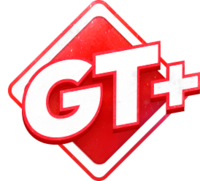Hi all! Today we will try a new format: I will show two hands that I played at NL1k on GGPoker, and with the help of Piosolver I will analyze the theory.
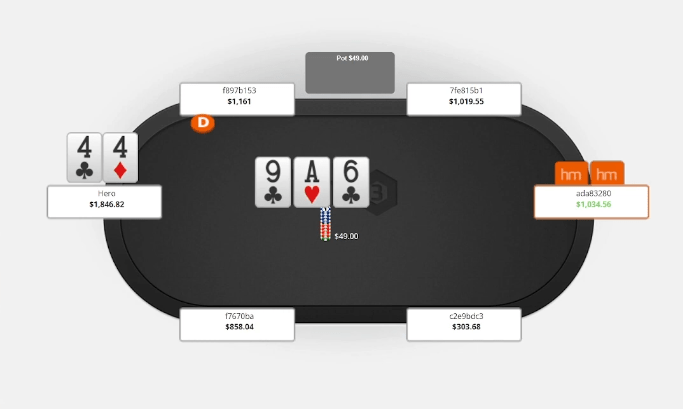
In the first hand, we raised from the cutoff and got called by the big blind. Ace high flops are usually very good for a player in position, and you can continuation bet with a high frequency, sometimes even with your entire range. Piosolver gives the BB player about $18 EV and the cutoff player about $33. The BB always starts by checking, after which the cutoff should execute the following strategy:
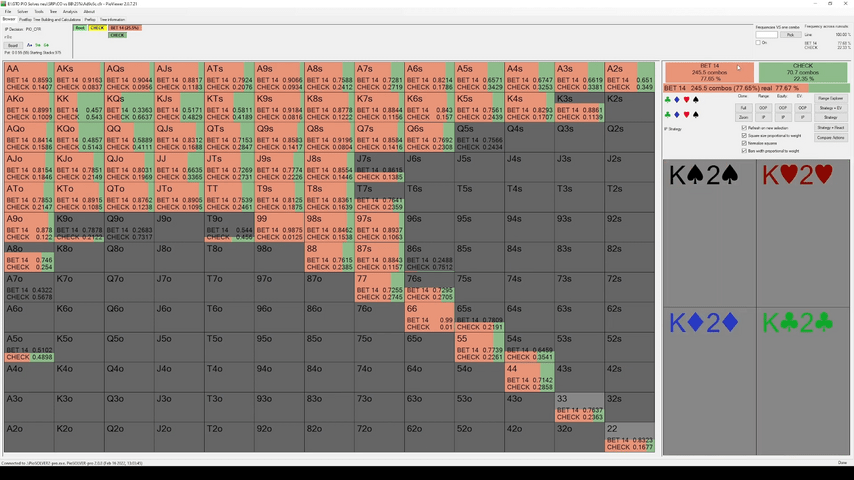
The solver wants to check often enough , and – hands that cannot collect three streets of value and do not particularly need protection. The strongest unpaired hands are played in the same way – KQs, KJs. In practice, I think we can afford to bet our entire range, since the big blind will have to find a lot of weird check-raises and non-obvious calls to punish our strategy. How do you feel about check-raising with 98o or 76s, for example? Or separate calls with queen-high and jack-high?
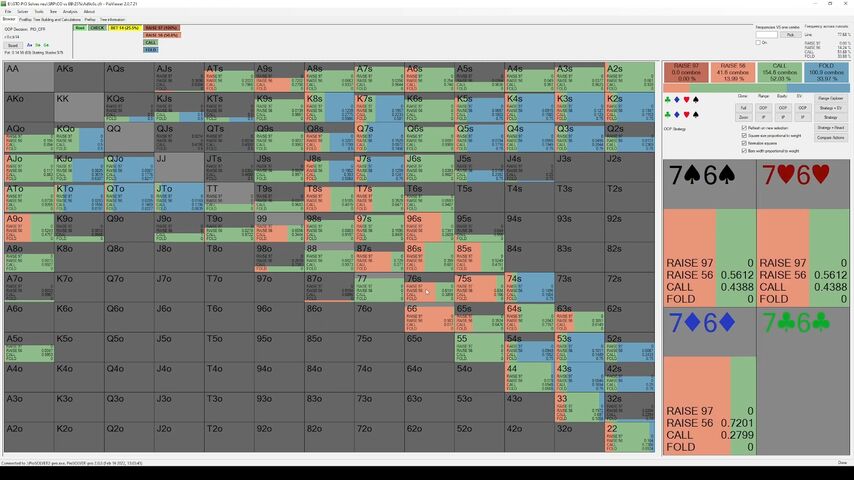
In the real world, of course, we don’t expect anything like this. If you lock the BB strategy and change it to a more human one, I am sure that the solver will expand the continuation bet all the way.
I played the standard way – I bet $12.25, a little more than a quarter of the pot. The opponent called.
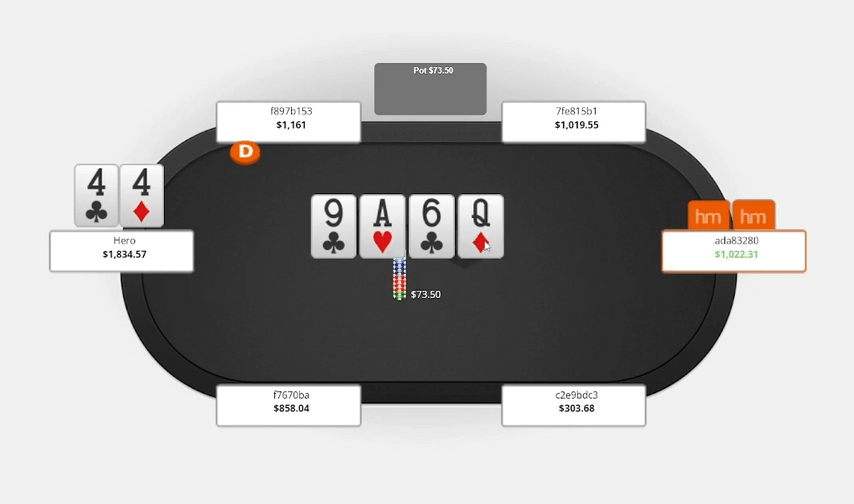
The queen is offsuit – a card on which we will split the range into an overbet and a check. Our opponent played many of his strongest hands via check-raise on the flop, so the EV of the cutoff on this turn is significantly higher. In his range are all sets, including queens, , , and they are all ready to play for the stack on many runouts. The cutoff's pot share is estimated by the solver as $51, leaving $27 in the BB. Overall, the queen is a very good card for our range.
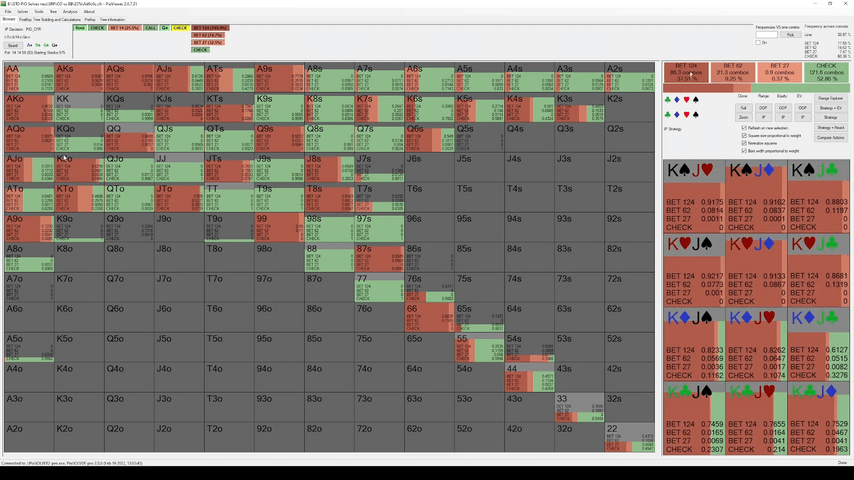
The overbet limit for value runs approximately at . Our second pairs always check, even with flush draws. Let's move on to the interesting part – bluffs. Value hands are very easy to find and the choice is obvious. It's not that simple with bluffs.
They can be divided into two types: natural and unnatural. Natural – all our gutshots and two-way shots: , , , , . They are not difficult to find, and we almost always put a second barrel with them.
Let's ask ourselves: if we limit ourselves to this, what will we do if a king, jack, or ten falls on the river? We'll have exactly zero bluffs left. This is not the point! To cover these runouts we will need unnatural bluffs.
For this purpose, the solver chooses low suited with and without a flush draw, the lowest suited connector without direct outs is 54s, and about half of the pocket combinations are below a six. For example, .
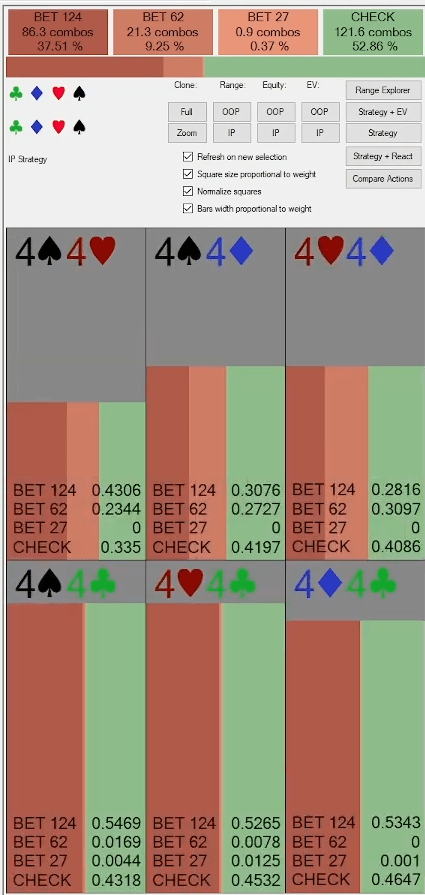
These hands are also good because they unlock many call-folds in your opponent's range, such as top pair or a queen with a flush draw. Try not to forget about such non-obvious bluffs in your range!
As you can imagine, I wouldn't be looking at this hand if I hadn't overbet here. I bet $120 and got called.
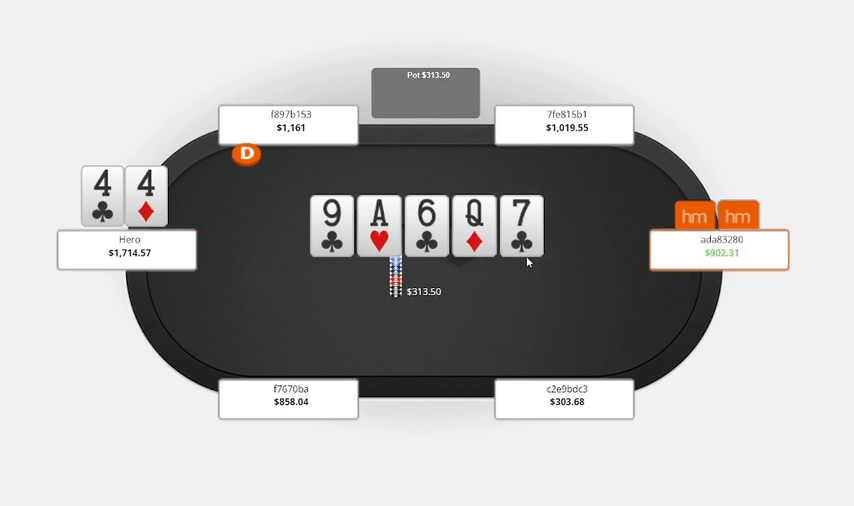
The seven of clubs that came on the river closed the flush and dramatically changed the dynamics of the board. The player’s share of the pot on the BB became higher immediately: $182 versus $142. We have already mentioned one of the reasons above. Can you remember?
That's right: all ours checked the turn with a flush draw. Also (we didn’t mention this) we checked aces with a flush draw and a weak kicker: from A8s and below. But in the range of check-calling the turn for the player in the BB, all these hands remained.
Solver leads the player in the BB 11% of the time. Perhaps I’ll recalculate this strategy in order to get rid of them: in practice, we don’t particularly expect leads.
Below is the cutoff strategy after the BB checks:
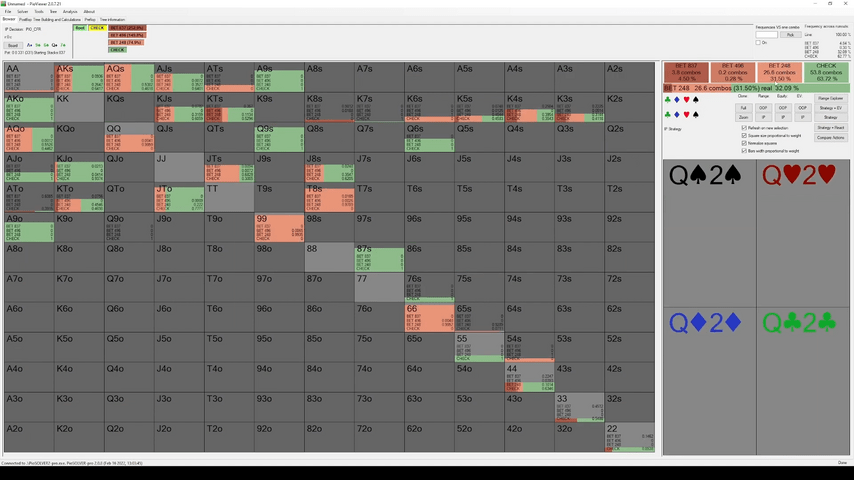
There is, in fact, only one size left – 75% of the pot, and just a few all-ins.
Perhaps I’ll show you right away what I did:
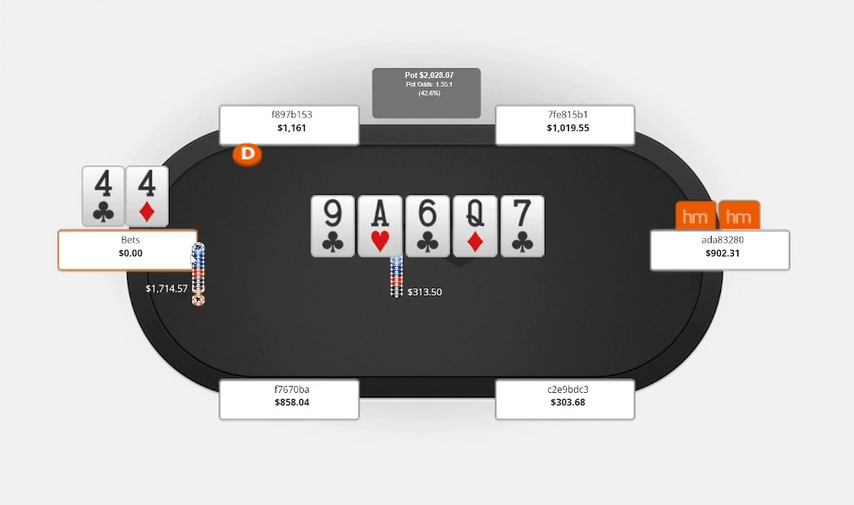
Yes, I pushed all in for about three pots. The opponent called with – top pair with a nut blocker.
Solver generally approves of my line, not with 100% weight, of course:
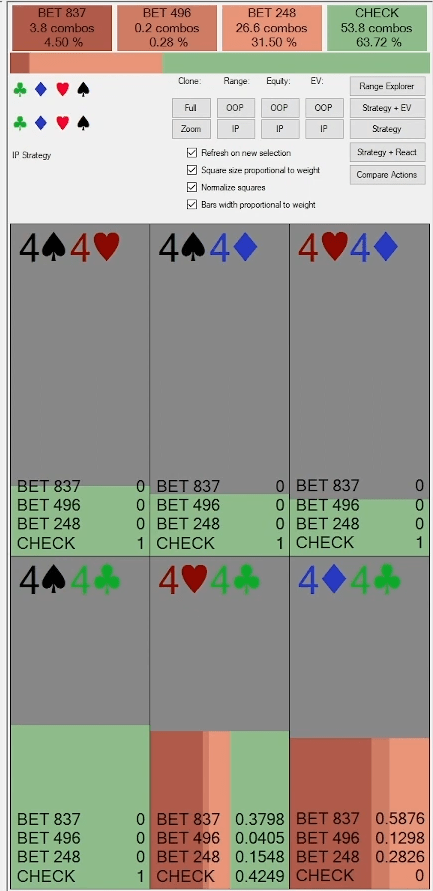
But with all-in becomes the only possible action.
However, I think I still made a mistake by overbetting. This is a low-frequency line, and low-frequency lines are too difficult to balance correctly. Now I much prefer 75% or check.
Overbet pushing is usually done to get paid with the nuts, but in our situation that is not the case. First, your opponent must fold a lot. So, even if he has a queen high flush, he is most often forced to fold.
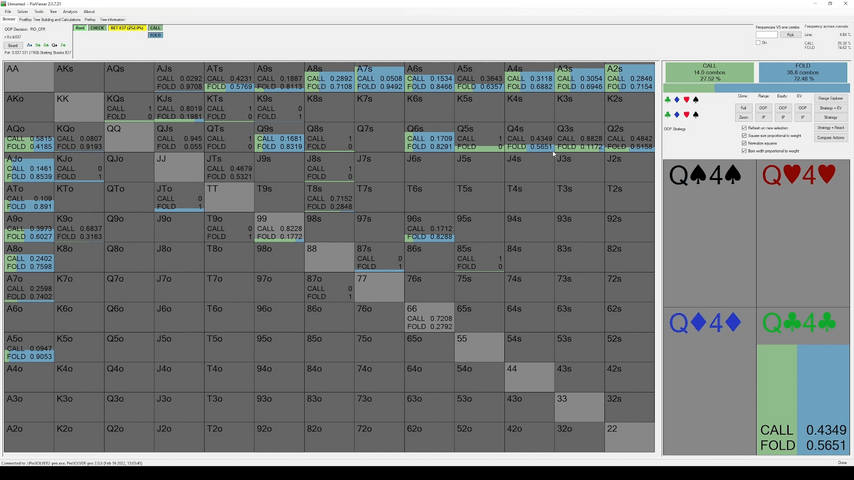
Secondly, against a 75% pot bet, the BB should shove almost all of his flushes. So even when we bet three quarters with , we will always take the stack from the lesser flushes. We can also bet bigger with our sets and straights – in general, this is the ideal sizing for most hands in our range. By the way, the river is so bad that the top two pairs end up outside the draw limit and simply checks behind.
To summarize: I played the solver, but it would have been better to find a normal bluff with a sizing of 75% of the pot.
The second hand was also played in the BB against the cutoff, but I was in the big blind and I 3-bet. With an effective stack of around 100bb, my opponent opened with a raise of $25 and called my 3-bet of $110.
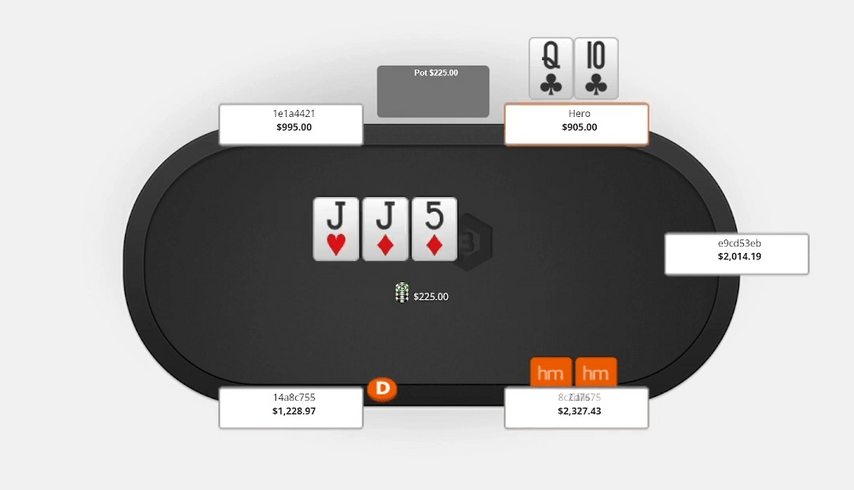
Paired flops with two jacks are usually good for our range. Solver bets half the pot with almost all hands.
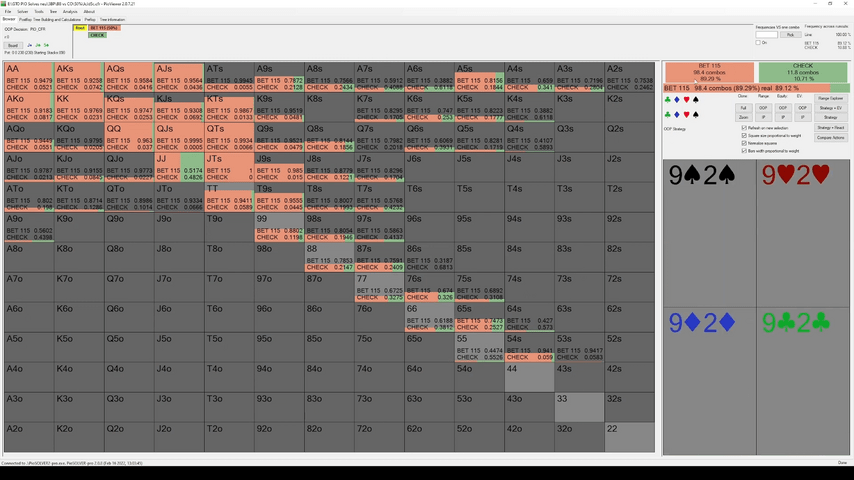
The pot's share is $131 for us, $93 for our opponent.
To defend properly, the cutoff must find low frequency calls with hands like KTs, QTs, KQs even without a backdoor flush draw. I am sure that most players will simply throw away such hands without any randomization, so our range bet is definitely profitable.
I bet half the pot, got called, and the second flush draw came on the turn:
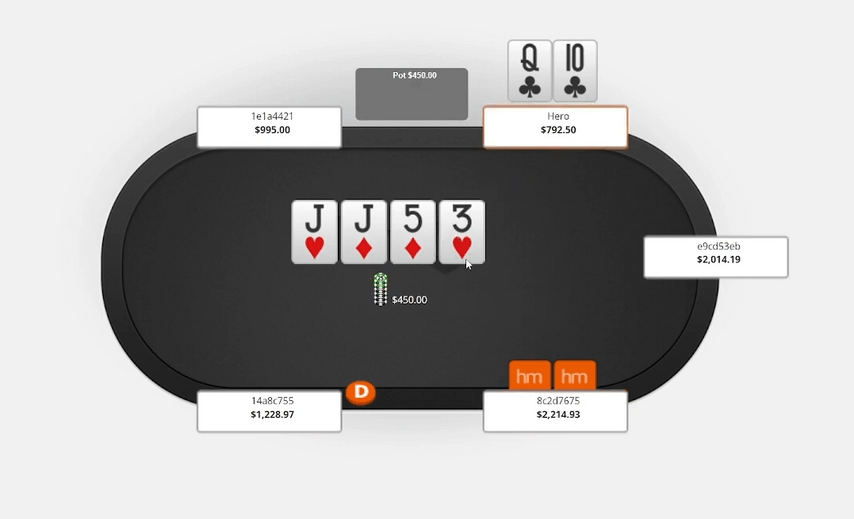
Solver plays with two sizes, 50% and 75%. I use only one – 50%, so I’ll recalculate the strategy for myself:
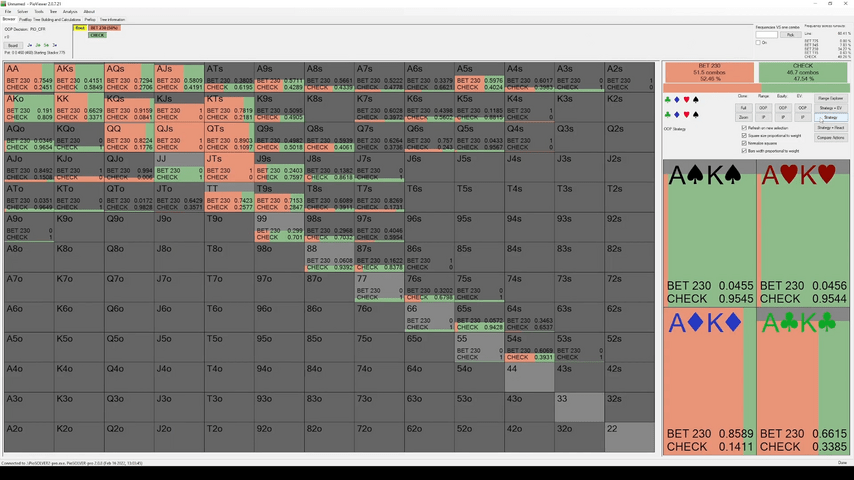
Let's start analyzing the range with value hands. Trips are almost always bets, overpairs mix in a few checks, but more often they barrel. The lower limit of the profit is somewhere between and .
What about bluffs? On a board with two flush draws, it's easy to find natural bluffs. For example, here's what we do with a flush draw on the flop:
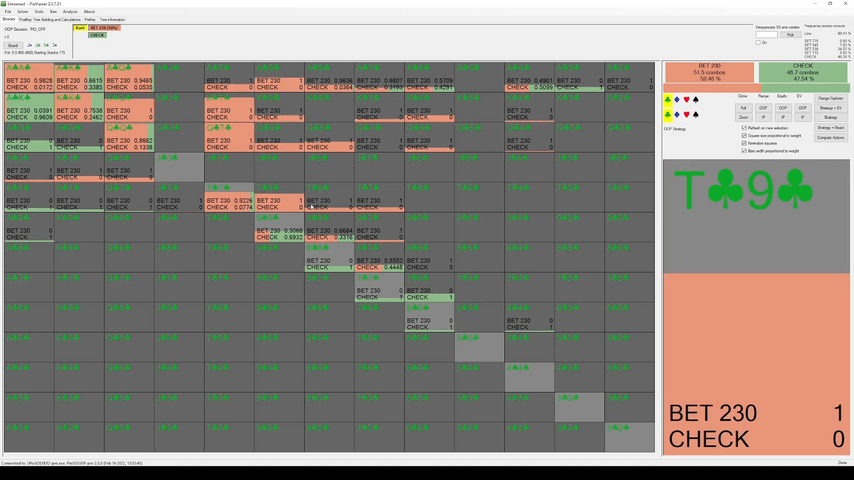
The situation is similar with the second flush draw: we bet the second barrel and sometimes check for a check-push, leaving a check-call for , and , since they are strong enough to check-call on blank rivers.
Do we have unnatural bluffs? In the last example, we were looking for hands that don't block call-folds. By the same logic, we want to avoid blocking both flush draws: an opponent in position will always call the turn on a flush draw, but will often fold without strengthening on the river.
Second point: it is advisable to block hands that play call-call-call. These are obviously trips. Since preflop we had a 3-bet in not the loosest position, the opponent rarely calls with an offsuit which means we want to block him with KJs, QJs, and JTs.
This makes QTs an ideal second barrel combination with or without a flush draw:
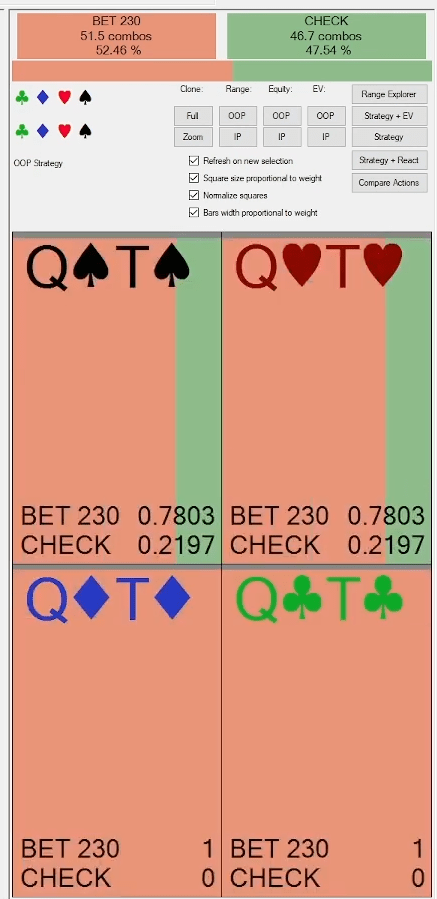
The situation is similar with KTs and KQs, and even AQs obey the same law. All these hands very often (sometimes always) fire the second barrel. By the same logic, AKo turns into a good second barrel – without blockers on a flush draw, they are played with a mix between bet and check in a ratio of approximately 2 to 1, while any blocker on a flush draw leads AKo to an almost obligatory check.
It is important to add that after calling the turn on blank rivers, they will check and reveal the opponent’s bet.
In Piosolver you can see the strategy of a certain hand on all runouts. Here's what we'd do with QTs without a flush draw on the river:
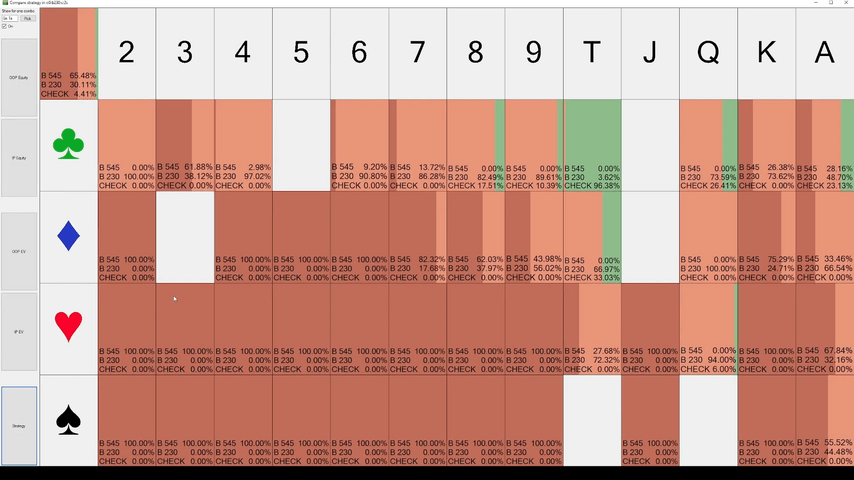
As you can see, we are not threatened with a check, unless we catch a ten (with a queen there will be a draw). Three barrels, no options.
I bet the turn and got called.
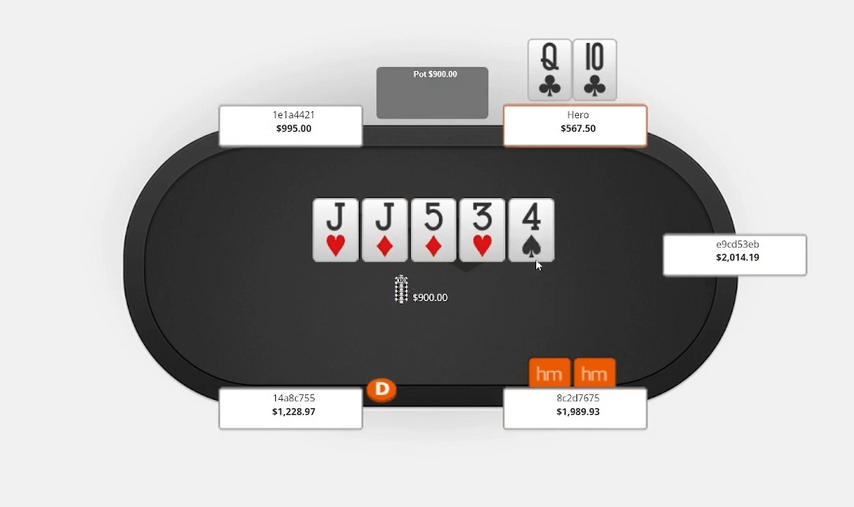
River four, QTs with a flush draw on the flop give up, with a flush draw on the turn they mix bet and check, and without blockers they always bluff:
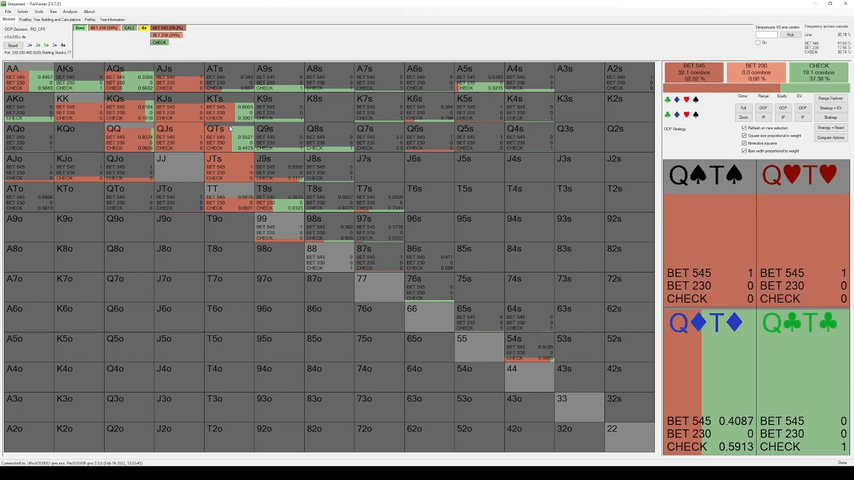
Other similar hands are also bluffed, including AQs (although mixes with checks are already appearing here).
By refusing to bluff and giving up on the river with our hand, we lose a lot of EV – as much as 5bb, 500bb/100. This is a big mistake.
Overall, I'm pleased that I found a non-intuitive second barrel on the turn and a shove on the river, despite being called in the hand and losing to a full house – .








